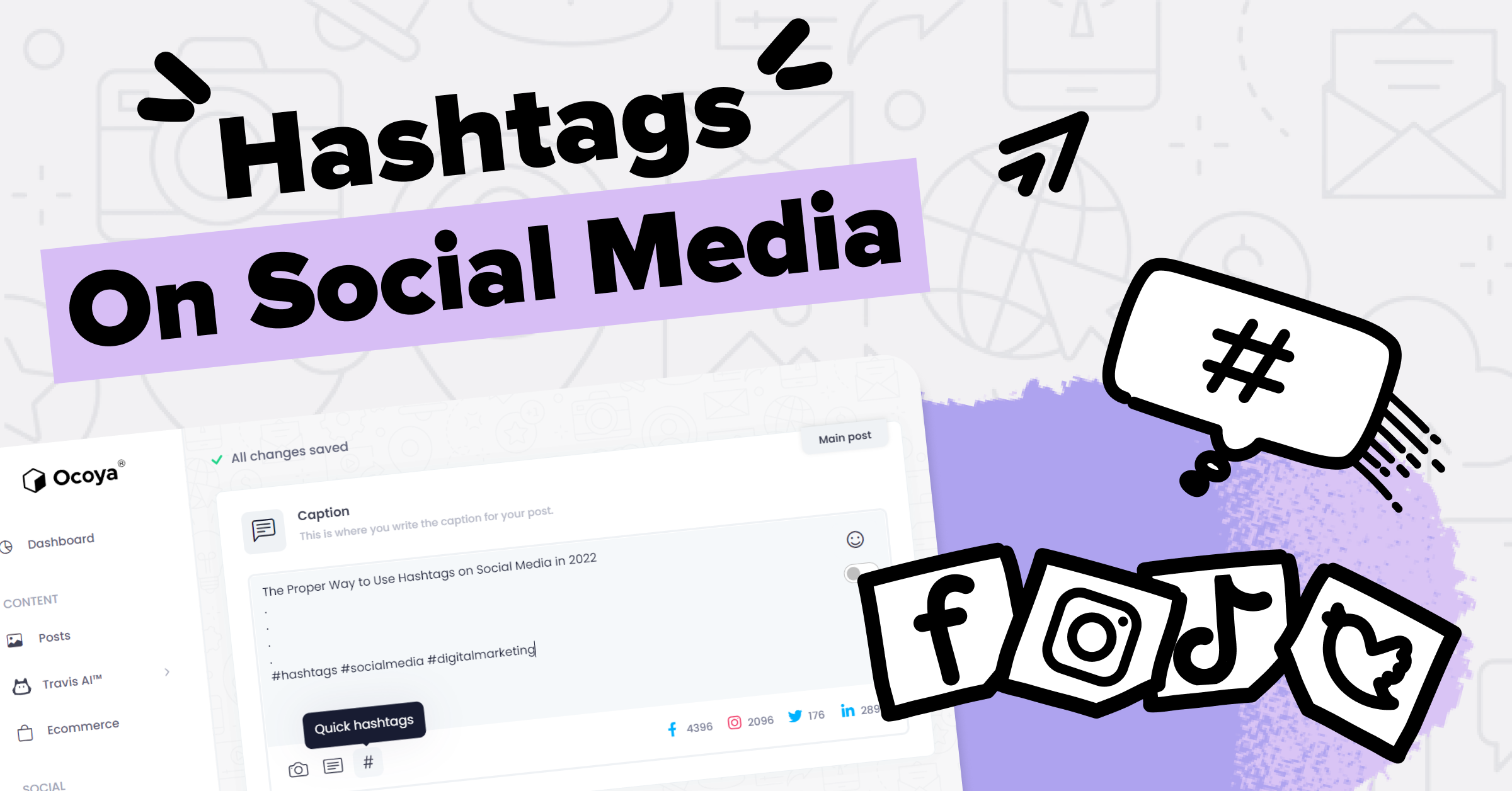Hashtags are one of the most important weapons used to increase reach and engagement on social media. For a digital marketer, especially one who spends hours at a stretch on social media, knowing how to use the right hashtags could be the difference between a viral post and one that nobody even reads about. In this blog post, we’ll walk you through some pro tips on using hashtags to improve your social media strategy revealed by the industry experts of a leading digital marketing firm in Nagpur.
What Are Hashtags and Why Are They Important?
Let’s first understand what hashtags are and why they are so crucial in digital marketing before hitting the pro tips.
A hashtag is essentially something that categorizes content inside social media platforms, like #DigitalMarketing, which is a keyword or phrase preceded by the “#” sign; therefore, hashtags enable users to find content based on themes, topics, or interests and can be searched by clicking the hashtag. Hence, all the public posts of people including this hashtag would be shown to make discovering relevant content easier.
To the digital marketer, a hashtag represents an opportunity to tap into new and relevant audiences. They enhance the visibility of your posts, increase rates of engagement, and grow your brand’s overall social media presence. More importantly, they connect your content to conversations happening around the world on various topics, events, and trends.
Now that all that is said, let’s dig into the pro tips on using hashtags properly.
9 Pro Tips for the Effective Use of Hashtags in Social Media
1. Research Before You Use
One of the biggest mistakes of social media marketers is using hashtags that are too generic or irrelevant to their audience. You may just throw in the most popular hashtags like #love or #fun, but the content rarely works, especially if they really don’t speak to your brand or your piece of content.
Research your hashtag beforehand and get to know its popularity, relevancy, and how it’s used. Tools such as Hashtagify, RiteTag, and Trendsmap are great for understanding trending hashtags and their performance metrics. Look for a reasonable niche so you can use proper hashtags fitting in your niche but broad enough to reach the target audience.
2. Mix Popular And Niche
Popular Hashtags: They may get your posts placed under very highly searched categories. However, they are drowned in the river of content. Niche Hashtags: These target a smaller, but perhaps very engaged audience.
Smart tip: Use a mix of widely used and niche hashtags. For instance, if you’re launching a campaign in digital marketing, you can use general keywords like #MarketingTips or #SocialMedia, along with more niche ones like #B2BMarketingTips or #ContentStrategy2024. This way, you can ensure sure to catch both the general audience as well as the niche audience.
3. Should not Stuff Your Post Too Much With Hashtags
While it would be tempting to include as many as possible on a post to see greater reach, overloading a post with many hashtags is somewhat counterintuitive. While most platforms, in this case, including Instagram, allow up to 30 hashtags, this does not necessarily mean you should use all those bases for one post.
The optimal is 5-10 hashtags per post. Use relevant ones, and avoid spammy hashtags that may indicate an inorganic effort to look credible. For Twitter, for instance, 2-3 is optimal due to the 280-character limit.
4. Create Branded Hashtags
Branded hashtags are custom hashtags unique to your business, campaign, or brand identity. They can be an effective channel for building a community and user-generated content (UGC).
Design a branded hashtag that is short, catchy, and memorable. Coca-Cola’s #ShareACoke is a great example of how you can get your users engaging, by sharing pictures of personalized Coke bottles. Prompt your users by requesting that they use your branded hashtag in their posts for the purposes of increasing brand awareness and creating organic engagement around your brand.
5. Examine Your Competitors’ Hashtags
Well, if you can’t come up with effective hashtags, you might want to start by checking out what your competitors are doing. Analyze their social media post and determine which they are using and how they are performing.
Take notice of the smart usage of the brands in your niche. Of course, you don’t want to steal their hashtags directly, but you can learn from them and get ideas on best-fit hashtags for your audience. You may even reverse-engineer their most popular post by using some of those same hashtags inside your content.
6. Leverage the Hashtags That Are Trending (But Be Cautious)
Some of the best ways to get higher visibility on your posts are trending hashtags, especially during big events or social media trends, but jumping on a hashtag without knowing what it is about might backfire.
Use trending hashtags when they are relevant to your content or brand. So if something like #WorldEnvironmentDay pops up on social media, and your brand has some relation to the issue of sustainability or environmental awareness, then you are in the perfect position to jump into this particular conversation.
But do not just jump on the trending hashtag about something that has nothing to do with your brand just for more visibility. That seems opportunistic and could then muddy your credibility going forward.
7. Mix up Your Hashtags on Different Social Media Platforms
As if it wasn’t enough that each platform used for social media has its own rules and trends when it comes to hashtags, the same thing that works well on Instagram may work poorly on LinkedIn or Twitter.
Vary your approach to hashtags for each network. For instance, Instagram permits a lot more hashtags than any other site, and a few good, professional/ industry-specific ones will work well on LinkedIn. And in most cases, Facebook users are not hashtagging so it’s one to avoid for the purpose altogether. Get to know the hashtagging habits of each network and adjust accordingly.
8. Leverage Hashtags in Your Stories and Comments
Not only are hashtags usable for posts, but they can also be used quite effectively through social media stories and even comments. Stories are the most popular way of updating content, and using hashtags in your stories can help them get seen.
On Instagram, you can add hashtags to your stories by typing them out or using the hashtag sticker. This makes your story searchable by a wider audience than just viewers of your immediate followers. Similarly, including your hashtags in the first comment of a post rather than in the caption can make your post look cleaner while you still reap all the benefits of the reach that the hashtag affords.
9. Use Hashtag Performance To Track
Actually, it is half of the battle where one has to track how it’s actually performing to know what works and what doesn’t. Regular analysis can help you hone and concentrate on the correct execution towards bringing in more engagement by focusing on the most useful hashtags.
You could follow up on your performance by using analytics tools like Sprout Social, Later, or Hootsuite. There, you’d be able to track impressions, likes, comments, and shares produced based on specific hashtags. From that data, you’ll optimize your hashtag strategy to improve your results over time.
Mastering the art of using hashtags will give you a gigantic boost in social media presence. The more one learns to research and select the appropriate hashtags, the better one will be able to balance popular with niche tags and track performance, thus tailoring the social media strategy to the right crowd. Being able to do all this will help you optimize your posts and be noticed in this increasingly growing world of social media.
Remember, hashtagging isn’t just the new hype-it’s a powerful tool that, if used appropriately, can give you a much higher level of exposure, engagement, and success in your digital marketing efforts.
So go ahead and start using these pro tips to make hashtags work for you!


